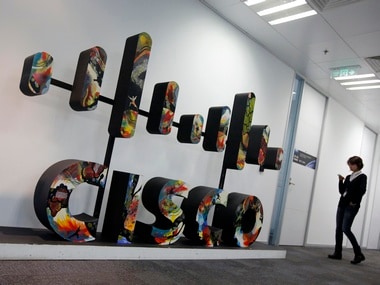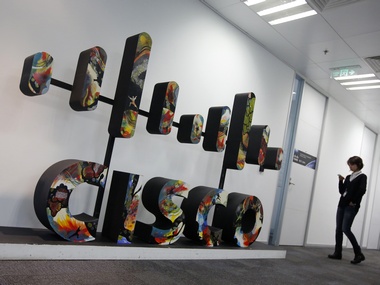Cisco Systems reported another tough quarter, saying profits fell by more than half and revenue declined by nearly 8 percent.
The dominant networking vendor had scaled back expectations for the quarter
and the coming year after a disappointing earnings report last November. At that time, it cited uneven economic conditions around the world and transitions in some of its product lines. For its second fiscal quarter, which ended Jan. 25, Cisco reported revenue of $11.2 billion and net income of $1.4 billion, or $0.27 per share. That profit figure was down 54 percent from $3.1 billion, or $0.59 per share, a year earlier.
[caption id=“attachment_76965” align=“alignleft” width=“380”]
 Reuters[/caption]
Reuters[/caption]
Last week’s results followed a gloomy first-quarter report that showed Cisco’s revenue falling short of the company’s own expectations and its profit declining from a year earlier. Right after posting those figures in November, Cisco warned that revenue in the second quarter would fall by between 8 percent and 10 percent. In December, the company cut its long-term revenue forecast. Over the next three to five years, revenue will rise by 3 percent to 6 percent per year, Cisco Executive Vice President and Chief Financial Officer Frank Calderone told a financial analyst conference. The company had been expecting
between 5 percent and 7 percent per year over the long term.
CIO.in reports that Cisco’s woes continued in the second quarter in less developed countries. Across important emerging markets – Brazil, Russia, India, China and Mexico – product orders were down by about 10 percent, Chairman and CEO John Chambers said on a conference call. It’s too early to identify a recovery trend in emerging countries, he said. Results in Europe are recovering but are still fragile in southern countries, according to Chambers. Orders were also down in the Americas, though up among U.S. enterprises. Worldwide orders from service providers were down 12 percent in the quarter, Cisco said. The company is shifting its video infrastructure business, customers are evaluating a new core router, and in mobile carrier infrastructure it’s up against traditionally long sales cycles, Chambers said.
The news was better in datacentres and security , where Cisco logged more revenue and orders than a year earlier. Datacentres are central to Cisco’s effort to become the top IT company, with overall architectures built around products such as the UCS (Unified Computing System) servers and Nexus switches. Chambers said UCS continues to gain market share.
Cisco also announced that it has allocated $100 million to invest in early stage companies in order to drive the evolution of the Internet of Everything.
)